Mark Twain once wrote that, in a period of 176 years, the lower Mississippi River was shortened by 242 miles. While the famous author used this in service to his satire, his calculation was true. This is because the Mississippi was channelized and straightened, removing the natural bends and curves of the river.
This same engineering affected rivers across the United States and has had numerous ecological consequences.
A river meanders naturally. Some of these meanders–often U-shaped–get cut off from the river and form wetlands. Called oxbows, they are extraordinarily important for wildlife. One species that relies on oxbows is the Topeka shiner, a small minnow of the Midwest.
By the late 1990s, the Topeka shiner had disappeared from 90 percent of its range, landing it an endangered species listing.
A partnership in Iowa to restore oxbow habitats has resulted in Topeka shiners returning to waters where they haven’t been seen for decades. Recently, the U.S. Fish and Wildlife Service recommended the fish be downlisted from endangered to threatened status, and recognized the conservation effort with a Recovery Champion award.
Here’s how restoring oxbows has benefits for endangered fish – and for people too.
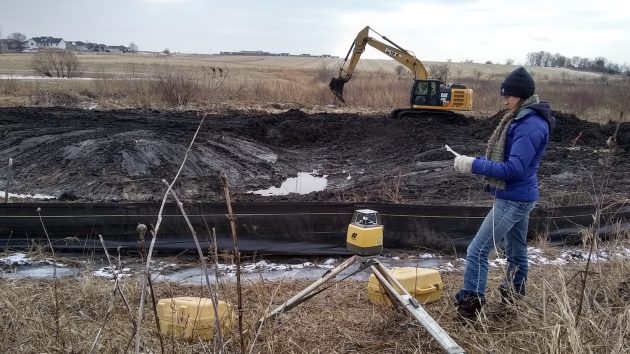
Restoring Iowa’s Oxbows
Prairie streams naturally contained a lot of oxbows. Research suggests than an individual Iowa stream could have as many as 400 along its length.
But many of those oxbows have disappeared due to flood control levees, channelization and sediments. Rivers are dynamic and oxbows naturally fill in with sediment. However, oxbows have filled in much more rapidly since European settlement. Runoff from agricultural fields and other agricultural practices increase erosion.
The loss of oxbows has meant the loss of the Topeka shiner. The Topeka shiner (and many other species) use the vegetation and slow currents of the oxbow for spawning and cover. In the fast current of the river, they’re easily picked off by predators.
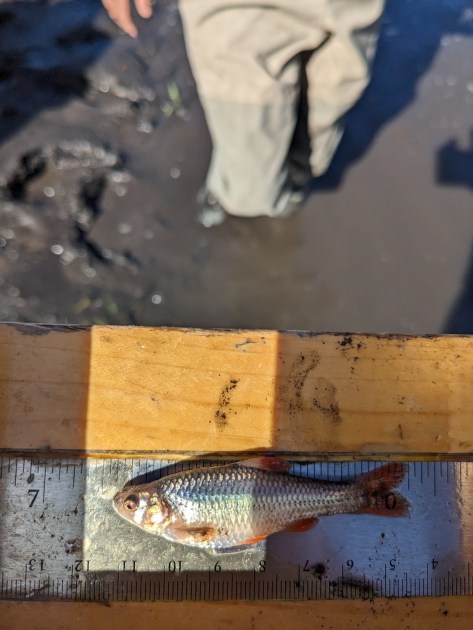
Karen Wilke, associate director of freshwater for The Nature Conservancy in Iowa, has been looking at oxbow restoration for 10 years. “This habitat that was lost from the Iowa landscape is what the Topeka shiner needed for recovery,” she says. “We also recognized that restoring oxbows has benefits beyond the shiner.”
In the early 2000s, the Iowa Topeka Shiner Partnership launched including TNC, the U.S. Fish and Wildlife Service, the Iowa Department of Agriculture and Land Stewardship, the Iowa Soybean Association and others. Many landowners had expressed interest in restoring oxbows, particularly in areas that couldn’t be farmed.
“In Iowa, having such a great partnership with agricultural organizations and landowners has been so important, because most of the land is in private ownership and in agricultural production,” Wilke says.
Since the launch of the partnership, more than 150 oxbows have been restored, with 40 more planned. The restoration of oxbows involves removing sediment deposited since European settlement and returning the oxbow to its original or enhanced condition.
“As restoration activities go, restoring an oxbow is relatively easy,” says Wilke. “You dig out excess sediment, ensure the river can connect to the oxbow, and return the habitat to its glory days.”
In conservation activities, it’s popular, especially in Iowa, to quote the movie Field of Dreams: “Build it and they will come.” And that appears to be exactly the case with Topeka shiners. Restore a wetland, and they’ll show up. Published research documents Topeka shiners in half of the restored oxbows, including watersheds where the fish haven’t been seen in 35 years.
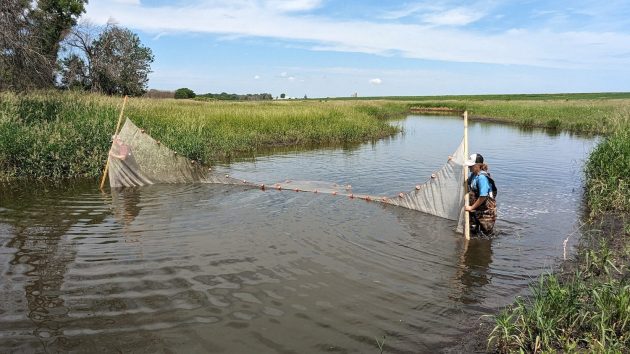
Expanding the Benefits
Oxbows are vitally important for biodiversity conservation: they’re used by over 50 native fish species, over 80 species of birds, amphibians and beavers, among others. They also benefit people.
“We call them multi-purpose oxbows,” says Wilke. “They have benefits beyond the shiner. They can benefit water quality and also act as flood storage.”
Recent research shows that multi-purpose oxbows are effective in reducing nitrates in water. This is important in a state where water quality issues often make national news headlines. According to a report by Iowa State University, oxbows have “the potential to reduce nitrates by 35 to 54 percent, levels comparable to other edge-of-field conservation practices recommended for nitrate reduction.”
Wilke notes that oxbows can also lead to other conservation practices, including working with landowners on in-field farm practices that reduce sediment from refilling the newly restored wetlands. She’s also worked on buffers around the oxbows, planted with native species and quick-growing cover crops.
“Many farmers enjoy the benefits of having an oxbow on their property,” she says. “This is really a partnership that benefits wildlife and people.”
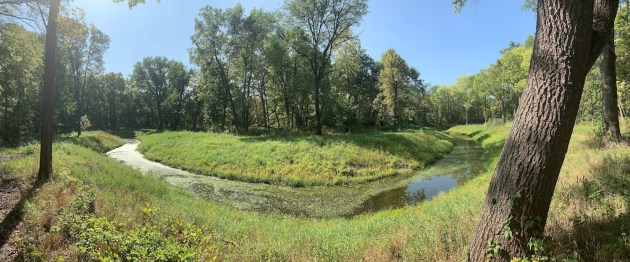
She also recognizes the need to expand oxbow restoration. By some estimates, there are more than 15,000 oxbows that could be restored, far more than TNC and partners could ever do on their own.
The focus now is on sharing knowledge from the restoration through field days, virtual events, webinars and outreach materials. The partnership published the online Oxbow Restoration Toolkit, so that other organizations and individuals can utilize proven practices to undertake their own oxbow projects.
“This effort has been a real success for the shiner,” says Wilke. “It may not be a glamorous game fish, but conserving it shows what can be accomplished when we work together. The restoration has helped an endangered species, and it has also had many other benefits for wildlife, water quality and Iowa agriculture.”
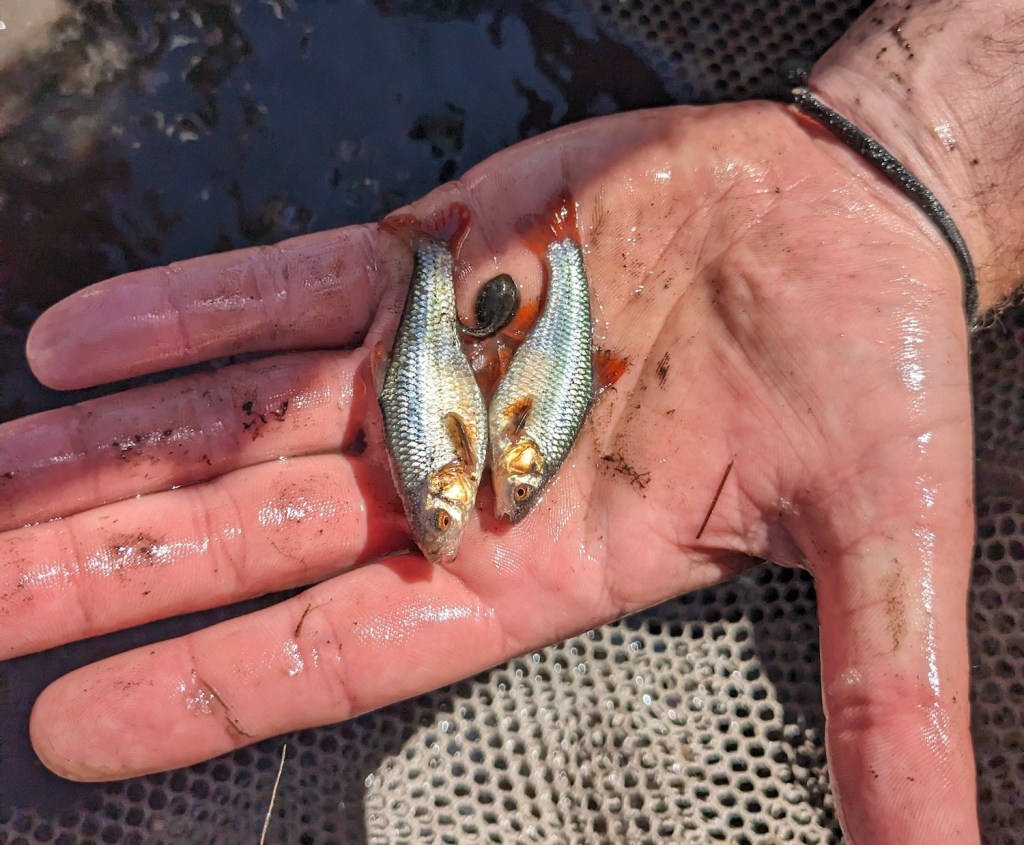



Fantastic partnership success story !